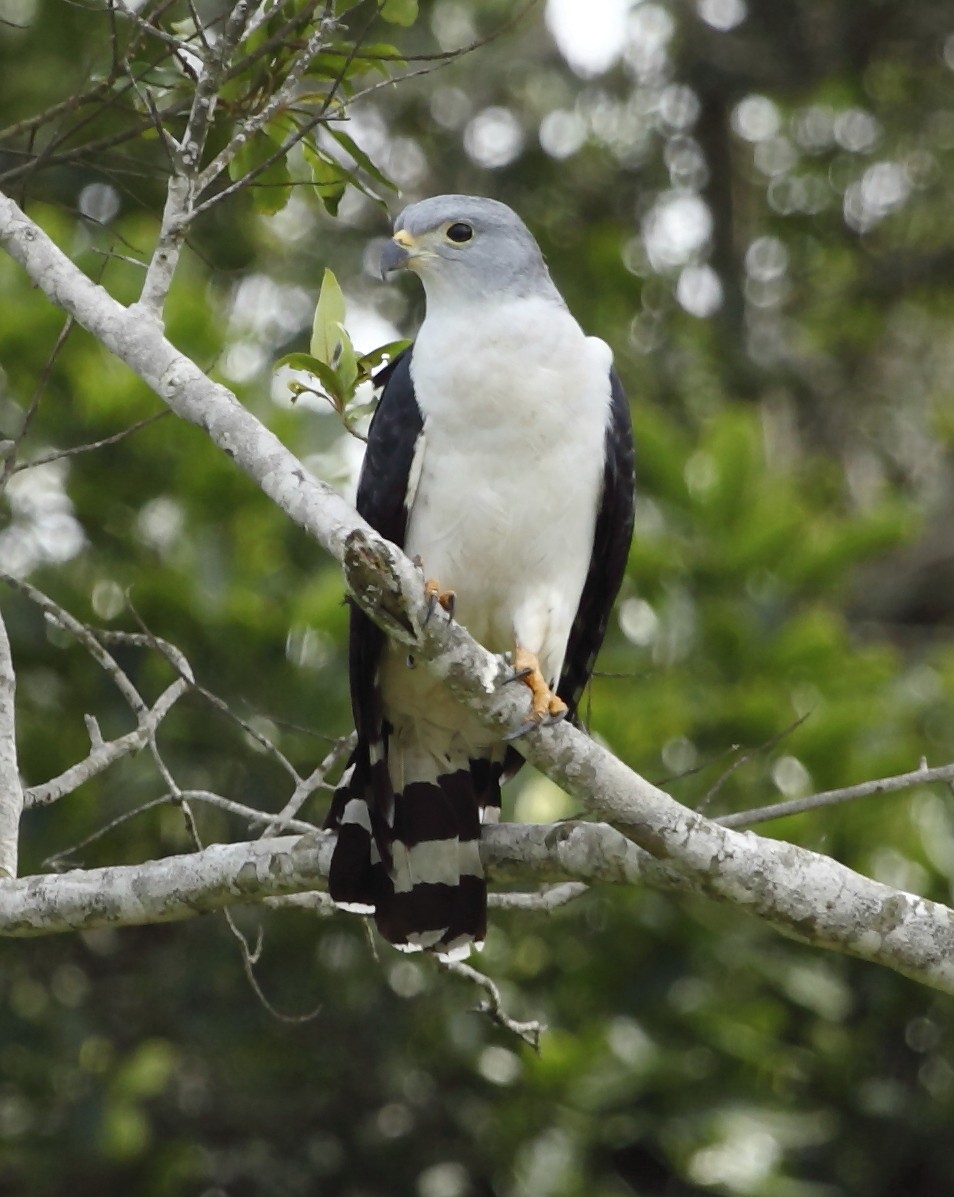Grey-headed Kite
A species of Leptodon Kites Scientific name : Leptodon cayanensis Genus : Leptodon Kites
Grey-headed Kite, A species of Leptodon Kites
Botanical name: Leptodon cayanensis
Genus: Leptodon Kites
Content
Description General Info
 Photo By Hector Bottai , used under CC-BY-SA-4.0 /Cropped and compressed from original
Photo By Hector Bottai , used under CC-BY-SA-4.0 /Cropped and compressed from original Description
The gray-headed kite is 46–53 cm in length and weighs 410-605 g. The adult has a grey head, black upperparts, white underparts, and a black tail with two or three white bars. The bill is blue and the legs grey. The flight is a deliberate flap-flap-glide. Immature birds have three colour morphs; the light phase is similar to the adult, but has a white head and neck, with a black crown and eyestripe, black bill and yellow legs, closely resembling the Black and White Hawk-eagle (Spizaetus melanoleucus). The rufous phase has a reddish neck with a white throat, black malar stripes and a black, long crest closely resembling the adult Ornate Hawk-eagle (Spizaetus ornatus). The dark phase has a blackish head, neck and upper parts, and dark-streaked buff underparts. The sophistication in the mimicry of these juveniles is remarkable and has only been described a few times. 
Size
54 cm
Nest Placement
Tree
Feeding Habits
Grey-headed Kite, a carnivorous raptor, primarily consumes insects, honeycomb, various hymenoptera (like bees and wasps, including their larvae), as well as birds, eggs, small snakes, lizards, frogs, and molluscs, using adept hunting techniques to forage and capture prey.
Habitat
Grey-headed Kite is typically found in a variety of rainforest habitats, from dense lowland forests to regions near bodies of water such as rivers and marshes. These birds are most prevalent in tropical areas, ranging from sea level up to higher elevations, commonly below 1000 meters but occasionally observed up to 2200 meters. Grey-headed Kite can be seen soaring briefly over the canopy and frequenting areas of gallery forest and forest edges. Their adaptability also extends to disturbed and fragmented environments within these broader geographical regions.
Dite type
Carnivorous
General Info
Feeding Habits
Bird food type
Species Status
Not globally threatened.